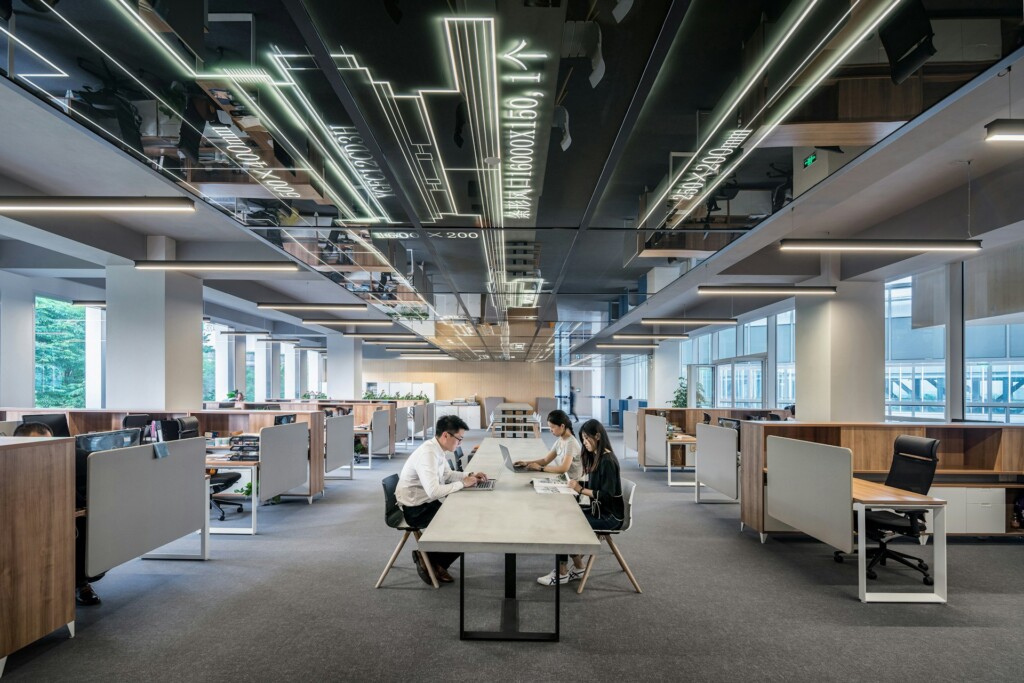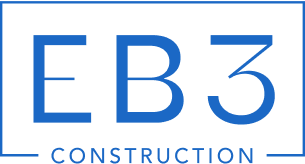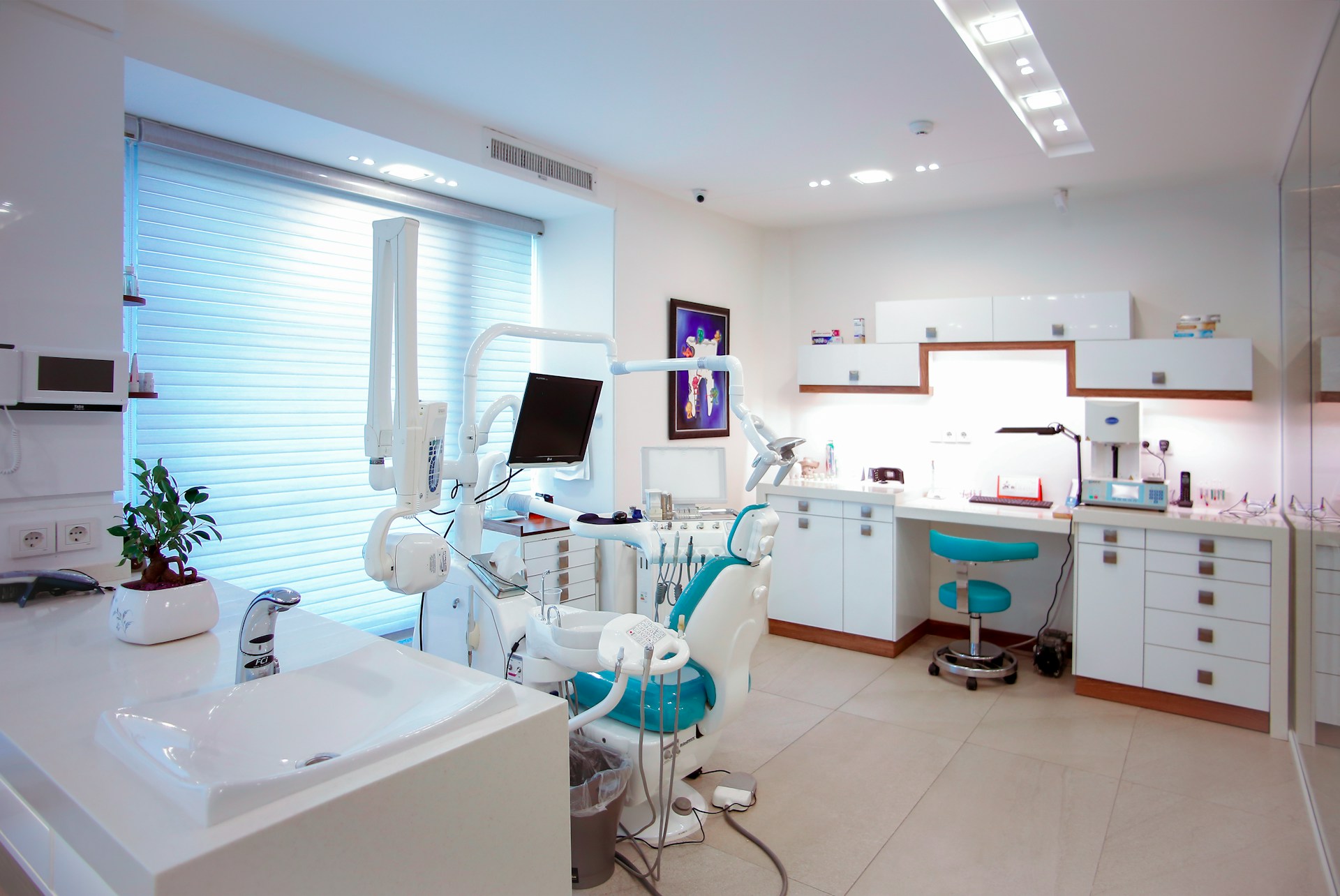Commercial buildings account for nearly 40% of national CO2 emissions, making thoughtful design decisions critical for both business success and environmental responsibility. Modern developers and property owners recognize that strategic design choices influence everything from employee productivity to long-term operational costs.
Commercial building design transforms business objectives into functional, inspiring spaces that serve multiple stakeholders. We coordinate construction documents, secure permits and approvals, conduct facilities planning, and integrate sustainable and clean energy requirements throughout the development process. This comprehensive approach ensures projects move from concept to completion while addressing regulatory compliance and long-range facilities planning needs.
What Are The Five Phases Of Commercial Building Design?

Commercial building design follows a structured process that transforms initial concepts into buildable structures. We organize this process into five distinct phases, each with specific deliverables and decision points that guide the project forward systematically.
Phase 1: Idea Generation
Idea generation establishes the conceptual foundation for the entire project. We work with property owners and developers to define a clear vision that serves both functional purpose and brand identity. This phase focuses on understanding how the building will support business objectives and create the desired market impression.
The concept development process examines user requirements, site opportunities, and market positioning. We establish preliminary design themes that will guide all subsequent phases while ensuring the vision remains achievable within practical constraints.
Phase 2: Pre-Design
Pre-design involves comprehensive analysis of project parameters before any drawings begin. We complete thorough site analysis examining topography, utilities, access points, and environmental factors that will influence design decisions. Budget analysis establishes realistic cost targets and identifies potential funding sources or value engineering opportunities.
Client requirements documentation captures detailed programming needs, operational workflows, and long-term growth projections. Regulatory reviews cover zoning regulations, setback requirements, height restrictions, and applicable building codes. We also establish sustainability goals that align with local green building incentives and corporate environmental commitments.
This phase produces the project program that serves as the foundation for all design work. Site surveys, regulatory compliance matrices, and preliminary scheduling establish the framework within which design solutions must operate.
Phase 3: Schematic Design
Schematic design translates the approved program into preliminary architectural solutions. We develop rough sketches and floor plans that demonstrate how spaces will be organized and how the building will relate to its site. These early drawings reflect building codes, zoning regulations, and user needs while maintaining flexibility for client feedback and refinement.
Design alternatives explore different approaches to massing, circulation, and spatial organization. We present options that balance functional requirements with aesthetic goals, allowing stakeholders to understand trade-offs between different design directions. Preliminary structural systems and mechanical concepts are established to ensure feasibility.
Client presentations during this phase use drawings, models, and visual references to communicate design intent clearly. We remain flexible to incorporate feedback while maintaining focus on the approved program and budget parameters.
Phase 4: Design Development
Design development transforms approved schematic concepts into detailed technical drawings and 3D models. We coordinate among all stakeholders including structural engineers, MEP consultants, and specialty contractors to refine systems integration. The design advances significantly in specificity while maintaining focus on function, efficiency, and budget alignment.
Material selections become definitive during this phase, with specifications for major building components, finishes, and systems. Structural sizing, mechanical layouts, and electrical distribution are coordinated to avoid conflicts and optimize performance. Building envelope details are refined to ensure weather resistance and energy efficiency.
We produce comprehensive drawing sets that communicate design intent to all team members. Cost estimating becomes more accurate as design specifics are established, allowing for value engineering adjustments before construction documents begin.
Phase 5: Construction Documents And Administration
Construction documents represent the culmination of the design process, producing detailed drawings and specifications that contractors use for bidding and construction. We create architectural plans, sections, elevations, and details that specify every aspect of the building. Structural plans show foundation systems, framing details, and connection specifications.
MEP plans detail mechanical systems, electrical distribution, plumbing layouts, and fire protection systems. Construction schedules establish sequencing and milestone targets. Bid documents include technical specifications, general conditions, and contract forms that govern the construction process.
Sustainability documentation supports green building certification applications and regulatory compliance. We compile applicable building code lists and specification sections that ensure code compliance throughout construction. During construction administration, we manage the construction process to ensure the built project aligns with approved plans and stays within budget parameters.
Regular site visits, submittal reviews, and progress meetings maintain design integrity during construction. We coordinate with contractors to resolve field conditions and approve any necessary modifications while protecting the project’s design intent and performance objectives.
Which Planning And Structural Guidelines Improve Office Building Efficiency?
Seven core guidelines shape efficient office building design, with dimensions and systems that we consistently apply across our commercial projects. These standards reflect decades of industry testing and remain fundamental to market-ready construction.
Floor Plate And Core-To-Glass Dimensions
Floor plate sizes directly impact tenant flexibility and leasing potential. Rentable space of 25,000 to 28,000 square feet per floor represents the industry average for office buildings, accommodating both large and mid-sized tenants effectively.
Core-to-glass dimension determines workspace functionality. We specify 42 feet from core to exterior glass for primarily private office layouts, allowing proper circulation and natural light penetration. Open workstation areas require 47 feet to accommodate modern furniture systems and collaborative zones.
Planning Grid And Structural Systems
The 5-by-5-foot planning grid optimizes space planning efficiency across all building classes. This grid aligns glazing modules with interior layouts, standardizes glass sizes for maintenance, and supports furniture planning regardless of tenant requirements.
Structural bays of 30 feet support perimeter office patterns that developers and lenders prefer. Private offices typically measure 10 or 15 feet wide, making the 30-foot bay ideal for grouping perimeter workspaces. While 25-foot, 35-foot, or 40-foot bays may suit specific users, we recommend the 30-foot standard for market acceptance.
Core Placement And Column Configuration
Central core placement maximizes efficiency and tenant satisfaction. We position elevator lobbies at the midpoint of the core, providing equal access to stairs, restrooms, and service elevators. Exit stair locations follow building code separation requirements while minimizing common corridor area.
Column-free interior spaces give tenants maximum layout flexibility. Modern structural engineering allows spans from exterior walls to core walls with minimal interior columns. Floor plates of 25,000 to 28,000 square feet typically require no more than four interior columns outside the core area.
HVAC Distribution Options
Overhead HVAC distribution remains the standard for speculative office buildings. Most tenants, building owners, and brokers understand and accept conventional ductwork systems for their reliability and familiar operation.
Under-floor HVAC systems offer compelling advantages despite market resistance. Benefits include reduced floor-to-floor heights, individual air volume controls, improved energy efficiency, enhanced indoor air quality, and greater flexibility for tenant changes. However, multitenant floors create construction challenges, and some users object to perceived floor hollowness from inferior raised-floor systems.
Sustainability Integration
Green building principles now influence every major office project. LEED certification programs have become mainstream across the office market, with most current designs pursuing precertification under green building criteria.
Heat-island reduction drives roof and site strategies. We integrate green roof designs, high-performance building materials, and refined MEP systems to reduce fossil fuel consumption and support sustainable communities. These measures align with federal carbon neutrality goals and growing corporate environmental commitments.
How Should Interior Office Spaces Be Planned For Comfort, Productivity, And Compliance?

We engineer office interiors around flexibility as a foundational requirement. Raised floors provide the infrastructure backbone for power distribution, data cabling, and HVAC systems while supporting mobile workstations that adapt to changing team sizes. This approach allows us to reconfigure spaces without major construction disruption.
The balance between collaboration and focus drives our spatial planning. Open areas facilitate team interaction, but we integrate quiet pods and meeting rooms that serve dual purposes as individual focus spaces when needed. This zoning strategy addresses the reality that effective work requires both social connection and concentrated effort.
Comfort And Indoor Air Quality Management
Fresh air ventilation forms the core of our comfort strategy. We specify low-emitting materials to minimize volatile organic compounds and integrate indoor air quality monitoring systems that provide real-time feedback. Access to windows and views becomes a priority in our layouts, supporting both psychological well-being and natural lighting strategies.
Temperature control and humidity management work alongside air quality measures. We coordinate with mechanical engineers to ensure HVAC systems deliver consistent comfort while maintaining energy efficiency targets.
Acoustic Design For Productivity
Sound management requires systematic planning across multiple building elements. We specify ceiling tiles with noise reduction coefficients around 0.75 to absorb ambient sound effectively. Noisy equipment like printers and mechanical systems receive dedicated enclosures or separate rooms to prevent disruption.
Lighting placement demands acoustic consideration. We avoid configurations where fixtures reflect sound over partition walls, which can amplify noise in adjacent workspaces. Strategic placement of sound-absorbing materials and careful attention to reflected sound paths maintains acoustic comfort.
Ergonomic Standards And Worker Health
Proper desk and chair sizing directly impacts long-term employee health and productivity. We coordinate furniture specifications to ensure adjustable work surfaces accommodate users across height ranges. Standard desk heights around 30 inches work for many applications, but adjustability within the 24 to 36-inch range provides necessary flexibility.
Monitor placement, keyboard positioning, and task lighting all require coordination to prevent repetitive strain injuries. We work with furniture vendors to specify ergonomic solutions that support healthy working postures throughout the day.
Accessibility And Code Compliance
Clear circulation routes with minimum 32-inch clearances ensure wheelchair accessibility throughout office areas. We provide 60-inch turning radii at key decision points and dead-end corridors. Adjustable work surfaces accommodate different physical needs, while reach ranges for switches, outlets, and controls follow ADA guidelines.
Door hardware, threshold details, and floor surface transitions require careful coordination to meet accessibility standards. We reference U.S. Access Board ADA/ABA standards throughout the design process to ensure compliance.
Security Integration
Physical security measures blend with technological systems to create comprehensive protection. We coordinate card access systems, surveillance camera placement, and secure storage areas during the design phase. Emergency egress routes maintain security protocols while ensuring rapid evacuation capabilities.
Cybersecurity considerations influence our technology infrastructure planning. Secure network closets, controlled access to server areas, and protected data pathways integrate with the overall security strategy.
Sustainability And Energy Performance
Daylighting strategies reduce artificial lighting loads while improving occupant satisfaction. We coordinate shading devices to control glare and solar heat gain without eliminating beneficial natural light. Occupancy sensors automatically adjust lighting and HVAC systems based on actual space usage.
Natural ventilation opportunities, where climate permits, reduce mechanical system loads. High-efficiency HVAC equipment and improved insulation performance support overall energy reduction goals. We integrate these measures early in the design process to maximize their effectiveness.
Building Codes And Standards Compliance
Office spaces typically fall under B2 occupancy classifications, requiring sprinkler systems and specific egress requirements. We coordinate with local authorities to ensure fire safety systems meet current codes. GSA acoustical classes C1 for enclosed offices and C2 for open office areas guide our acoustic design decisions.
Our design process references multiple standards: GSA PBS-P100 for federal projects, ICC IBC for general building requirements, and U.S. Access Board standards for accessibility compliance. Early coordination with code officials prevents delays and ensures smooth permitting processes.
What Can Today’s Projects Learn From The ‘Commercial Style’ Of 1890–1920?
The Commercial style, also known as the Chicago style, emerged from revolutionary advances in steel frame construction and elevator technology. These innovations allowed architects to design buildings reaching 6 to 20 stories, fundamentally changing the urban landscape between 1890 and 1920.
Steel frame construction freed building design from the massive masonry walls previously needed for structural support. We see this liberation expressed through the style’s characteristic visible grid of piers and spandrels, which became an architectural feature rather than a concealed necessity.
Defining Features That Guide Modern Design
The Chicago window stands as perhaps the most recognizable element of this era. This three-part window system featured a large fixed central pane flanked by two narrow casement windows for ventilation. This design maximized natural light while providing air circulation, principles that remain crucial in today’s energy-conscious building design.
Flat roofs with modest cornices defined the style’s clean horizontal emphasis. Ground-floor storefronts incorporated expansive display windows, establishing the commercial transparency we expect in modern retail design.
Projecting bays extended from ground to roof, creating visual interest while maximizing interior space and natural light penetration. These bay windows demonstrated how functional elements could enhance architectural expression.
Ornamental Approaches And Vernacular Applications
Ornament in Commercial style buildings ranged from minimal decoration to influences borrowed from Romanesque and Gothic Revival styles. This flexibility allowed buildings to respond to local preferences while maintaining their essential structural clarity.
The vernacular subtype of the Commercial style proves particularly relevant for contemporary projects. These one-to-four-story brick buildings featured large ground-floor windows, flat roofs, and decorative parapets. Early automotive buildings adopted this form, demonstrating the style’s adaptability to new building types.
Contemporary Applications
Modern commercial buildings can apply Commercial style principles through honest expression of structural systems. Steel frame construction continues to enable large spans and flexible floor plates, allowing contemporary buildings to showcase their structural logic rather than conceal it.
Storefront strategies benefit from the Commercial style’s emphasis on transparency and accessibility. Large window areas at street level create visual connections between interior activities and public sidewalks, supporting both marketing goals and urban vitality.
The style’s systematic approach to fenestration, using regular window patterns and proportions, offers guidance for contemporary curtain wall design. These patterns create visual rhythm while optimizing daylighting and views.
Conclusion And Next Steps

Commercial building design delivers meaningful results when we follow structured phases and apply proven planning principles. From idea generation through construction administration, each phase builds toward spaces that serve both business objectives and occupant needs. The planning guidelines we use today, from 30-foot structural bays to raised floor systems for MEP coordination, create the foundation for flexible, efficient office environments.
Early coordination with an Architect of Record streamlines the entire process. We align construction documents with regulatory compliance requirements, integrate sustainability goals from the start, and ensure building codes guide every design decision. This coordination becomes essential when projects require grant-supporting documentation or long-range facilities planning for regulatory agencies. The result is a commercial building that functions as intended and meets all applicable standards.
Contact EB3 Construction to coordinate your commercial building project from design through construction completion.




